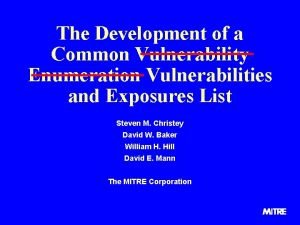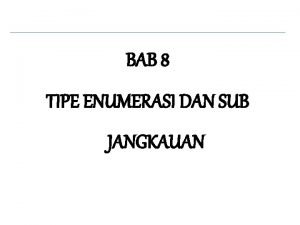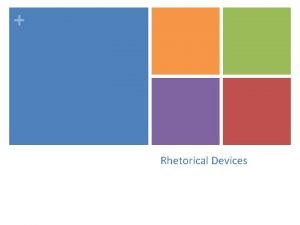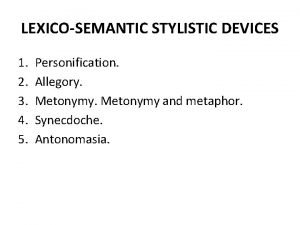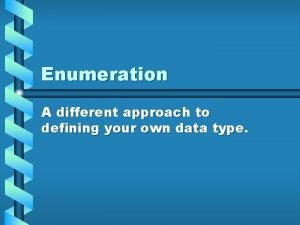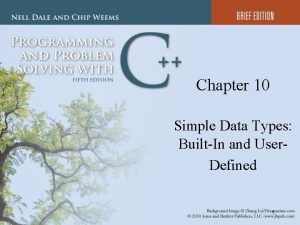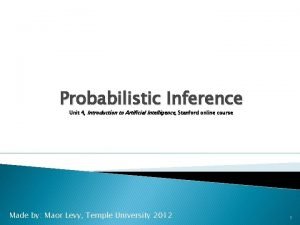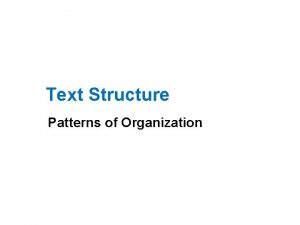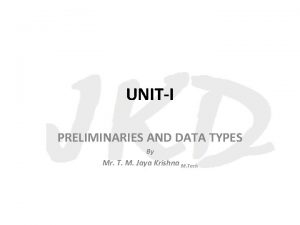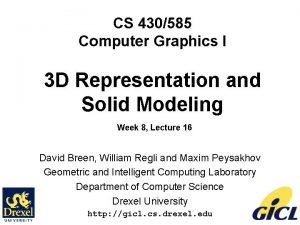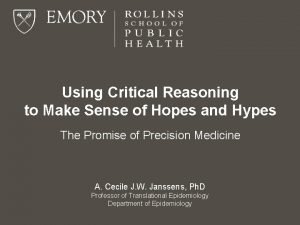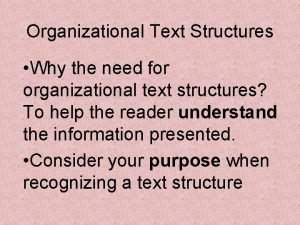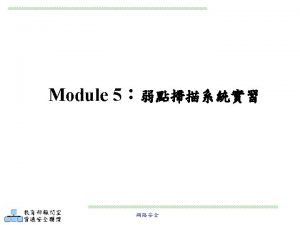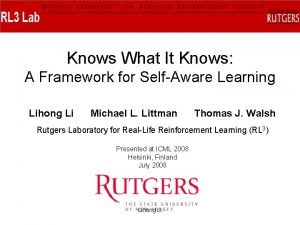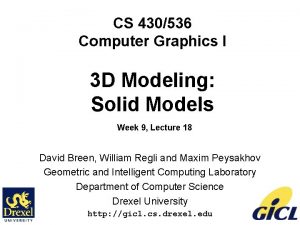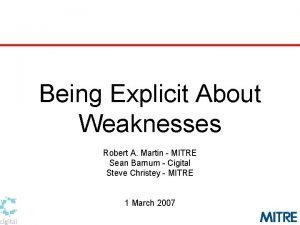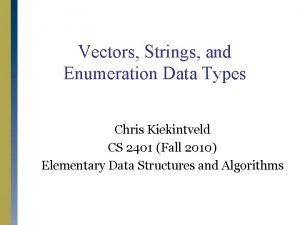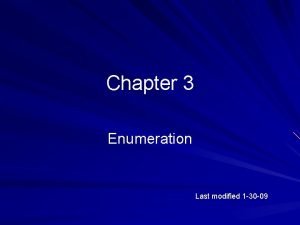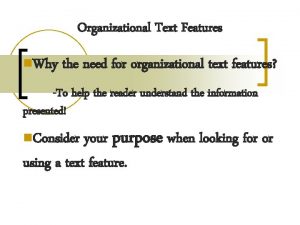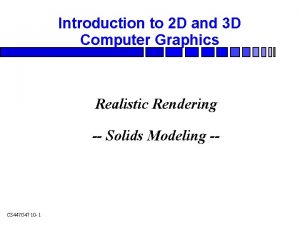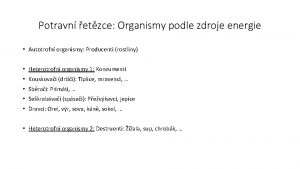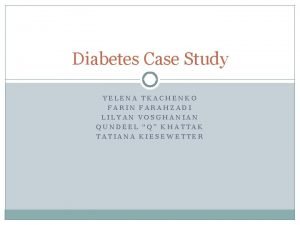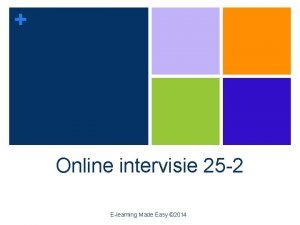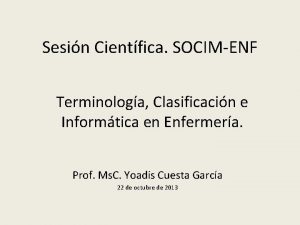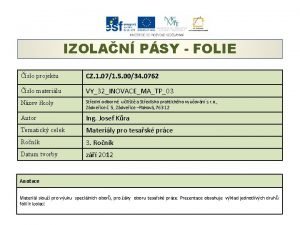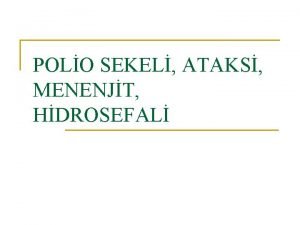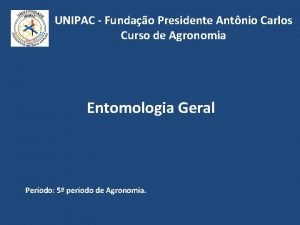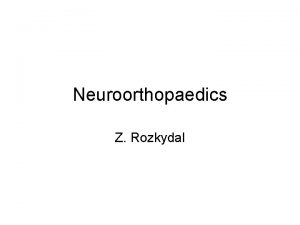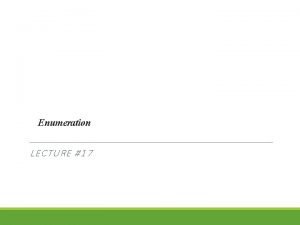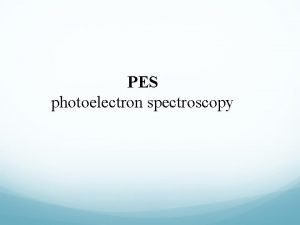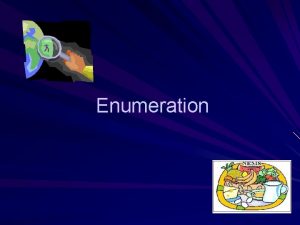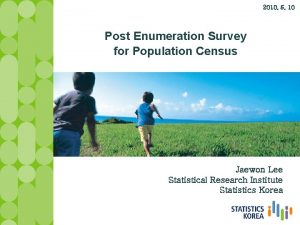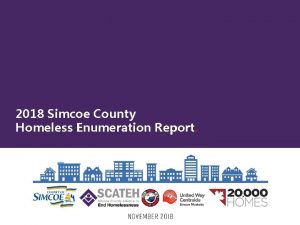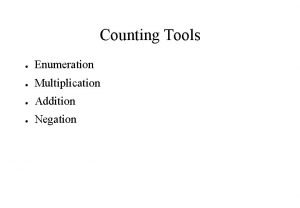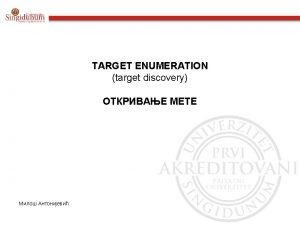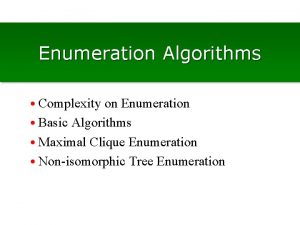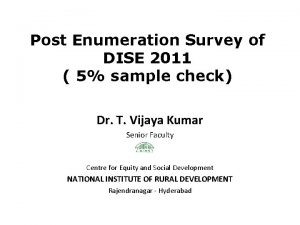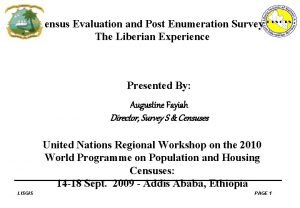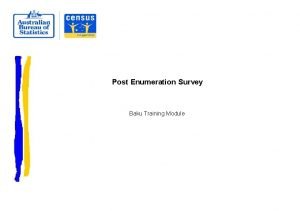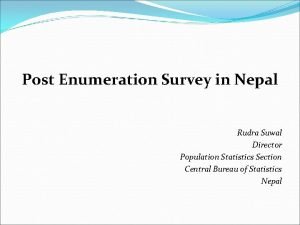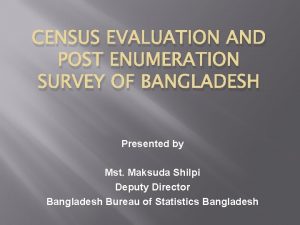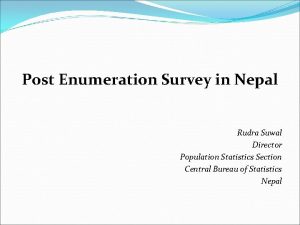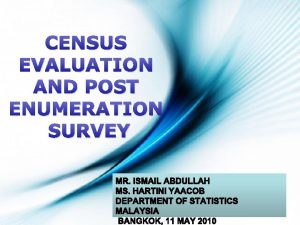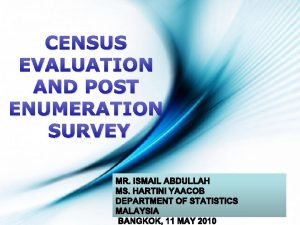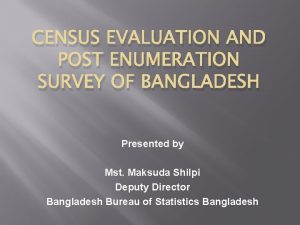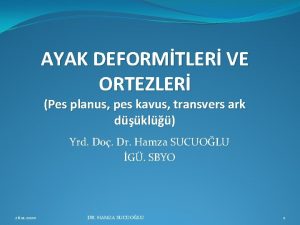PES PC 2010 Post Enumeration Survey of Indonesia




















































![PES Estimate of the Total Population PES estimate of the total population [ ] PES Estimate of the Total Population PES estimate of the total population [ ]](https://slidetodoc.com/presentation_image_h2/653ec8ff19a967c0e025108f6b7ab426/image-53.jpg)




- Slides: 57

PES PC 2010 Post Enumeration Survey of Indonesia Population Census 2010 Directorate for Development of Census and Survey Methodology May 10, 2010 1

Introduction Non sampling error always exists in data collection. This error is bias source which is caused by field enumerator and respondent responses. 2

Introduction (2) Field staff error: • coverage error : under coverage or over coverage, and • content error While, respondent error: response error which is part of content error. 3

Introduction (3) The Indonesia Badan Pusat Statistik (Statistics Indonesia, BPS) is conducting the 2010 Population Census in May of 2010. In order to evaluate the quality of the 2010 Census, the BPS will conduct a Post Enumeration Survey (PES) in a sample of census enumeration blocks (CBs) about one month following the census enumeration. 4

Objectives The objective of the PES will be to evaluate both the census coverage as well as the content errors in the census data Census coverage indicators (i. e. , omission rate, net coverage error rate) • Reliable estimates for 33 provinces • Based on dual system estimation Measure census content errors • Cross-tabulate census and PES responses for each variable, using records for matched persons • Indices of inconsistency – measure of response error 5

PES 2000 PES SP 2000 1. 2. 3. Was not designed to estimate the population Sample size: • 4 provinces ( 11 regencies/cities) • 40 census blocks Without field reconciliation VS PES 2010 PES SP 2010 1. Designed to estimate the population (Province level) 2. Sample size: • 33 provinces • 1200 census blocks 3. With field reconciliation 6

Coverage PES SP 2010 will be conducted in: 33 provinces 1. 200 census blocks (CBs) 7

Activity Time Table 1. 2. 3. 4. 5. 6. 7. 8. 9. 10. 11. 12. 13. 14. Activity Master Nat’l Instructors Workshop Document Delivery Instructors Training Field Enumerator Training HH & Population Enumeration Matching Coordinator & Data Processing Briefing Desk-match) HH & population Reconciliation visit Final Matching Data Processing in BPS Province Doc & data delivery to BPS HQ Statistical Counting Data Analysis & report writing Publication printing Schedule Week III April 2010 May 2010 Week I June 2010 Week III-IV June 2010 Week I July 2010 Week III July 2010 July-September 2010 August-September 2010 October 2010 8

Sample Allocation Sample allocation: Proportional to square root of population Min 24 CBs; Max 80 CBs per province 9

Selection of CBs Sample One Stage PPS, size: estimated number of household from census mapping ( KK ), Urban/Rural as implicit stratification variable Exception for Provinces of Maluku, Maluku Utara, Papua & Papua Barat: Two stage sampling: 1. Select 6 districts 2. Select 4 CBs per district 10

Training in BPS Province 1. Field enumerator training (3 effective days) - Participants are CP 2010 best enumerators 2. Matcher training (2 effective days) - Matcher from BPS Province 3. Data entry training (3 effective days) - Persons form BPS Province 11

Diagram 1. Organization Structure of PES PC 2010 12

Field Organization Headquarter • General Person In Charge (PIC) is head of BPS HQ, helped by Deputy of MIS. • Technical PIC is Director for Development of Census & Survey Methodology. Province • General PIC is head of BPS Province. • Technical PIC is Head of IPDS BPS Province 13

District • General PIC is head of BPS Reg/City • Technical PIC is Head of IPDS BPS Reg/City Diagram 2. Field Organization of PES PC 2010 14

Field • A team consists of 1 team coordinator & 2 • • enumerators. Team Coord is Kepala Seksi Or Coord of Sub. Dist Statistics (KSK) or staff of BPS Reg/City with best capabilities, Enumerator is statistical partner of staff BPS Reg/City appointed. Team coordinated with KSK for filed enumeration and responsible to Kasie IPDS. Since PES is part of Population Census, then Kasie IPDS should coordinate with Kasie Statistik Sosial. 15

Document Flow Documents for training & field enumeration will be delivered by BPS HQ to BPS Province c. q. Kabid IPDS. BPS Province will distribute these documents needed by enumerators to BPS Reg/City c. q. Kasi IPDS. BPS Reg/City will distribute documents to team coord, next team cooed will distribute it to enumerators as much as needed for field enumeration. 16

Document Flow (cont’d) BPS Reg/City have to keep eye on documents of enumeration whether it have been given to team coord on time, whether team coord have given the cleaned document to BPS Reg/City. After document checking in BPS Reg/City is done, document must be delivered to BPS Province c. q. Kabid IPDS immediately. All PES documents will be kept in BPS Province until final report of Population Census 2010 is released. 17

PES Enumeration 1 month following census enumeration All census documents already in BPS Province to maintain independency Max 6 weeks after census: 1. Reducing recall error 2. Reducing level of population movement 18

PES Enumeration (2) Enumeration by team: 1. One team consists of 1 team coordinator and two enumerators 2. Workload: 2 -4 CBs per team 19

PES Enumeration (3) PES enumerator should be independent of the census operation PES enumerator assigned to different CBs from his/her census working areas. PES questionnaires are designed to obtain information on current residents of (de jure) and persons who moved out after census (out-movers). 20

Moving Status of Enumerated Persons Important to account for moving status of population between census and PES Current PES residents: 1. Non-movers 2. Persons who are recorded after census a) In-mover b) Out-of-scope (born after census) Out-movers (moved or died after census) 21

Procedure C 1 described in reference manuals Match non-movers and out-movers Enumeration methodology • Easier to find in same sample CB Count in-movers • More accurate coverage Estimate matched movers • Apply match rate of out-movers to number of in- movers

Questionnaire SP 2010 PES 1 Will be used one for all: 1. HH and population enumeration 2. Matching of hh/population 3. Field reconciliation Shading Area will be taken from census questionnaire (Form SP 2010 -C 1) Consists of three main blocks (of total 9 blocks): 1. Block IV Non-mover and in-mover 2. Block V Persons moved/died after census 3. Block VI Persons enumerated in census not in PES 23

Form SP 2010 PES 1 24

25

26

27

Questionnaire SP 2010 PES 2 For household enumerated in census not in PES 28

Form SP 2010 PES 2 29

MATCHING FLOW SP 2010 PES 1 HH enume rated in PES & Census SP 2010 -C 1 No Yes FINISH PROBABL Y MATCH? No HH Status in SP 200 PES 1 = Non-match Yes PERSONS INITIAL MATCHING No HH ENUME RATED IN CENSUS NOT IN PES FILL SP 2010 PES 2 Yes FIELD RECONCILIATI ON PERSON FINAL MATCHING 30

Desk-Match Two-way matching between all households and persons (non-movers and out-movers) enumerated in census and PES for sample CBs. HH and persons enumerated in PES coded as not matched are treated as census omissions in PES estimation procedures. 31

Desk-match ( 2 ) Matching documents PES and census will be conducted in BPS PROVINCE. a. 1 matcher will match 3 CBs b. Matcher is staff of BPS Province Quality control of matching operation will be better. Documents need to be sent back to BPS Reg/City for reconciliation visit 32

Matching of households First level of matching – households Availability of census stickers for most households will make matching more effective and faster First step – match households based on census sticker information Next – remaining households matched based on names of heads of household • Possible to use PES listing sheets to help with matching

Matching of households (continued) After first part of household matching, remaining households matched based on names of individual persons Households considered matched if at least one person matched Multiple households can be matched • Matched 1 to 2 or more • Matched 2 or more to 1

Matching of households (continued) 7 (seven) possibilities found in initial matching of household: 1. Matched 1 to 1 2. Matched 1 to 2 or more 3. Matched 2 or more to 1 4. Non-match 5. In-mover 6. Out-of-scope 7. Possible match 35

Matching of Persons Only for hh that is matched Matching of persons only done for: • Non-movers • Out-movers (moved or died after census) Matching establish numbers of rules, allow some flexibility in range of ages especially for older persons. 36

Matching of Persons ( 2 ) Generally, person will be match in matched hh. Non-movers and out-movers will be matched with person in census. Non-movers are persons who are listed in Block IV Form SP 2010 PES 1, out-movers are persons who are listed in Block V Form SP 2010 PES 1. 37

Matching of Persons ( 2 ) Possible match name is consistent and some other characteristics match, but not all • When matcher consider there is a chance the PES and census persons match. Matching coordinator may convert some possible matches to final matches before reconciliation 38

Rules & Guidelines of Matching In assinging person match status, matcher has match 4 variables of PES & census: 1. name of person, 2. sex, 3. relationship to head of hh, and, 4. age. Matcher has to establish rules in assigning person initial match status. 39

Table 4. 2 Criteria of Initial Match Status for Person No. Criteria I. 4 variables are the same II. 3 variables are the same, one variable is different: Conditional Match a. Sex b. Name c. Age d. Relationship to head of Initial Match Status Possible match within tolerance Match Out of tolerance Possible match Not contradictory Match Contradictory Possible match household 40

Criteria No. III. 2 variables are the same: Conditional Initial Match Status Name OUGHT TO BE THE SAME a. Name & sex Possible match b. Name & Relationship to Possible match the head of household c. Name & Age Possible match d. Others Non Match IV. 1 variable is the same: a. Name Possible match b. Others Non Match V. None of 4 variables is the Non match same 41

Tabel 4. 3 Tolerance for Variable: Name, Relationship to head of hh, and Age No. 1 Variable Name Tolerance Minor spelling difference that does not change the sound. Sound is phonetically the same but the spelling differs. Shortening of names and use of initial and nicknames in common use will be considered agreements, for example, Tony for Antonio, Fata for Fatimah, Ed for Eduardo, or Ben for Benikana. 42

No. 2 Variable Tolerance Relationship to head of hh Not contradictory (see Table 4. 4). For example PES may show the relationship as head, spouse head, daughter, and mother; census may show the mother as head, PES head as son and all the other household members as other relatives. In this example, Census and PES entries are not contradictory. 3 Age: Tolerance Under 15 years + 2 tahun 15 – 29 years + 4 tahun 30 – 44 years + 7 tahun 45 – 64 years + 10 tahun 65 years or older + 15 tahun 43

Tabel 4. 4 Changes of Relationship to Head of HH Between PES & Census 1 RELATIONSHIP TO HEAD OF HOUSEHOLD 3 4 Ado Spo pted/ Child use Step child 5 7 So Pare n/d Gran nts/P aug dchil arent hter d -in-inlaw P P P 1 Head of HH 2 Spouse P 3 Child P Ð Ð P P P Ð P Ð Ð Ð 4 Cen sus Hea d of HH 2 PES 6 5 6 7 Adopted/Step child Son/daughter-inlaw Grandchild Parents/Parentin-law P 8 9 0 Others family House maid Oth ers Ð Ð Ð P P Ð Ð Ð Ð Ð Ð Ð Ð Ð 8 Others family Ð Ð Ð Ð 9 Housemaid Ð Ð Ð Ð P : Others not contradictory Ð Ð Contradictory Ð Ð : Ð Ð Ð Notes: 0 Ð Ð 44

Reconciliation visit is critical part of PES methodology Necessary to follow up all households and persons enumerated in the census but not in the PES • Determine whether each household and person was correctly enumerated in the census • Erroneously enumerated persons subtracted from census population in the estimation procedures Follow up cases of possible matches to determine final match status

The objectives of reconciliation visit is not to make any correction to the result of census or PES enumeration (because this would break the assumption of independency), but only to verify information which have been gathered. To maintain independency between PES and census, enumerator is not allowed to add person or hh, or to change demographic characteristics of person/hh, either in census or in PES questionnaire. 46

After reconciliation visit, there are no more cases of ”possible match”. All outcomes will be mutually exclusive. 47

Dual system estimation Asumption: PES and Census are independent. PES Enumerated Omitted Total Enumerated M N 21 Census Omitted N 12 N 22 Total NP N 2. NC N. 2 NT RM = proportion of matched person from PES data

Weighting PES data Necessary to attach weights to the PES data for estimates to be representative Weights based on inverse of probability of selection Weights will vary by stratum and CB Weights may be adjusted based on final census results

Census Population Correctly Enumerated The total census population correctly enumerated ( ) is estimated by subtracting an estimate of the census erroneously enumerated population from the PES data (based on the E-sample), , from the official census figure for the total population. = where is the official census total population 50

Dual System Estimator of the Total Population = estimation of total population The PES results will be used to evaluate the census coverage errors, but they will probably will not be used to adjust the official results from the census. 51

Net Census Undercount Rate = estimation of total population = Net Census Undercount Rate 52
![PES Estimate of the Total Population PES estimate of the total population PES Estimate of the Total Population PES estimate of the total population [ ]](https://slidetodoc.com/presentation_image_h2/653ec8ff19a967c0e025108f6b7ab426/image-53.jpg)
PES Estimate of the Total Population PES estimate of the total population [ ] = • Weighted estimate of non-movers plus inmovers enumerated by the PES. The matched population is estimated as 53

The Dual System Estimates 1. Preliminary estimate of = = weighted estimate of matched population + census correctly enumerated population (missed by PES) + census erroneously enumerated population PES survey estimate of the total population enumerated in census Once the official census population ( ) is available, the estimate of could then be ratio-adjusted as: 2. The final estimate will the be used to calculate the final net census undercount rate ( ), using the formula specified previously. 54

Census Content Error Evaluation Based on the data for matched persons: • Non-movers, and • Out-movers 55

Reference manuals Evaluating Censuses of Population and Housing, U. S. Census Bureau, 1985 Design and Implementation of a Post. Enumeration Survey: Developing Country Example, U. S. Census Bureau, August 1993 POPSTAN (A Case Study for the 1980 Censuses of Population and Housing), Parts A, B and D, U. S. Census Bureau, 1979

THE END THANK YOU 57
 Post enumeration survey
Post enumeration survey Acls abcde
Acls abcde Indonesia tanah air beta pusaka abadi nan jaya
Indonesia tanah air beta pusaka abadi nan jaya Enumeration transition words
Enumeration transition words Owasp cwe
Owasp cwe Cve common vulnerability enumeration
Cve common vulnerability enumeration System enumeration
System enumeration Rhetorical devices in art
Rhetorical devices in art Metonymy in stylistics
Metonymy in stylistics Enumeration text type
Enumeration text type Enumeration text type
Enumeration text type Inference by enumeration in artificial intelligence
Inference by enumeration in artificial intelligence Allusion rhetorical device
Allusion rhetorical device Example of cause and effect signal words
Example of cause and effect signal words Enumeration text type
Enumeration text type Spatial occupancy enumeration
Spatial occupancy enumeration Footprinting vs enumeration
Footprinting vs enumeration As maria hurriedly left for church
As maria hurriedly left for church Types of logical reasoning
Types of logical reasoning Concept/definition text structure
Concept/definition text structure Example of enumeration text type paragraph
Example of enumeration text type paragraph Common platform enumeration
Common platform enumeration Knows what it knows: a framework for self-aware learning
Knows what it knows: a framework for self-aware learning Spatial occupancy enumeration
Spatial occupancy enumeration Mitre common weakness enumeration
Mitre common weakness enumeration Telnet enumeration
Telnet enumeration Example of enumeration
Example of enumeration énumération
énumération Port 135 enumeration
Port 135 enumeration Inference by enumeration in artificial intelligence
Inference by enumeration in artificial intelligence Enumeration example
Enumeration example Concept definition signal words
Concept definition signal words Spatial occupancy enumeration
Spatial occupancy enumeration Potravní řetězec
Potravní řetězec Carpenito verpleegproblemen
Carpenito verpleegproblemen Diabetes pes statement
Diabetes pes statement Nanda 13 domeinen
Nanda 13 domeinen Diabetes pes statement
Diabetes pes statement Pes domaci projekt
Pes domaci projekt Ckd pes statements
Ckd pes statements Self monitoring deficit pes statement
Self monitoring deficit pes statement Výří oči
Výří oči Draw a photoelectron spectrum for aluminum
Draw a photoelectron spectrum for aluminum Planejamento situacional
Planejamento situacional Diabetes pes statement
Diabetes pes statement Pes stavba tela
Pes stavba tela Pes-structuur voorbeelden
Pes-structuur voorbeelden Pes online services
Pes online services Dominios de nanda
Dominios de nanda Izolon pes
Izolon pes Photoelectron spectrum of scandium
Photoelectron spectrum of scandium Kernig ve brudzinski
Kernig ve brudzinski Geniculado
Geniculado Introduction of nursing process
Introduction of nursing process Pes statement for celiac disease
Pes statement for celiac disease Dušan dušek kufor na sny rozbor
Dušan dušek kufor na sny rozbor Pes charlie
Pes charlie Vulpius procedure中文
Vulpius procedure中文





